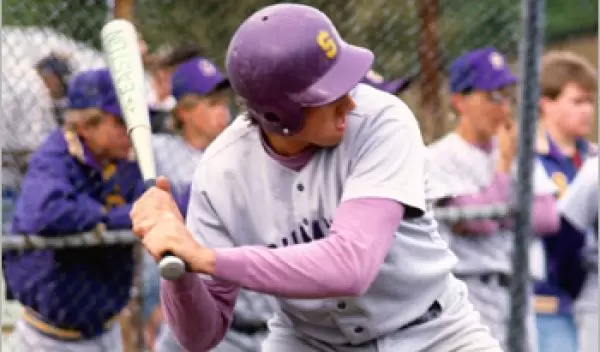
"Crash" Course in Visual Perception and Motor Control
A recipient of one of the National Science Foundation's (NSF) prestigious CAREER (Faculty Early Career Development) awards, Gray is investigating the perceptual, cognitive and motor responses behind the human ability to create or avoid object collisions. "Virtually all movement in waking life involves either creating or avoiding collisions with objects in our environment," asserts Gray. "We are trying to understand how people use what they see in their environment to make appropriate decisions and control their actions."
Collision creation and avoidance both involve a precise, almost instantaneous assessment of the point in time at which a collision could potentially occur, known as "time to collision estimation." This estimation is followed by an equally swift decision to avoid or connect, and an appropriate motor response--all within half a second or less.
Keep Your Eye on the Ball
So how do we actually accomplish the task of connecting a bat with a baseball?
"When objects move and approach, our brains process and combine monocular and binocular visual cues to make nearly instantaneous predictions about the ball's trajectory and time of arrival," Gray explains. Monocular vision involves just one eye, while binocular vision incorporates vision from both eyes for depth perception. "In this processing we weight the monocular and binocular information based on the amount of time available for response."
In his baseball simulator, Gray has been able to do something that previous researchers have not--combine controlled presentation of visual stimuli with complex motor actions and successfully analyze the role of monocular and binocular vision in hitting and catching. He has determined that binocular vision requires more processing time. Therefore, when time for action is shorter, humans place more weight on monocular vision information.
But what combination of perception, attention and skill makes the difference between a strike and a home run? Interestingly, Gray has observed that while focusing one's attention on skill execution in catching and hitting tasks improves performance among novice players, it hurts performance in expert players--perhaps explaining why some skilled players "choke" under pressure.
"Experts and novices use some of the same visual cues when hitting a baseball--the difference is in the amount of attention required to process these cues and generate an action. Experts rely on proceduralized knowledge--also known as 'motor memory'--to physically hit the ball, which frees their attention to focus on subtle environmental cues, such as the pitcher's body language or the count," says Gray. "Since the physical process is already ingrained in the body, asking an expert player to concentrate on the physical aspect of swinging and hitting has a negative effect. On the other hand, novice players are still internalizing the physical process, so the extra attention to the task improves performance."
Drive Carefully
Gray's visual perception research also has important implications for traffic safety and driver education. His findings indicate that motorists often use unreliable visual-motor control strategies in deciding whether it is safe to pass another vehicle.
"When driving a car, we tend to rely heavily on visual cues to determine whether it is safe to make a left-hand turn or overtake another vehicle," Gray notes. In his NSF-funded driving simulator, he is able to isolate and manipulate situations and variables to determine whether motorists are making decisions based on visual cues such as perceptions of distance, speed or time to arrival of an oncoming car.
The misperception of an oncoming car's arrival time can be especially dangerous in highway driving due to a perceptual phenomenon called "motion adaptation." This effect, caused by the repetitive motion of objects in the field of view, can cause drivers to think they have more time available to overtake than is actually available, potentially leading to rear-end or head-on collisions.
Another problem arises when the driver's basic strategy is flawed. "Rather than using a more accurate time-based strategy, many motorists use their perception of the distance of the other vehicle to make their decision," Gray remarks, noting that a better strategy would be to consider how much time is necessary to complete the overtaking maneuver. "It is all too easy to make judgment errors when using visual cues."
The broader implications of Gray's collision research have led to several education initiatives at the Polytechnic campus of Arizona State University, including new courses in Human Factors in Transportation and Human Factors in Sports. Additional NSF funding involves research and development of multi-sensory interfaces capable of alerting drivers to dangerous decisions and perceptual errors.
Gray concludes, "By understanding the visual and motor processes involved in collision creation and avoidance, we can achieve the ultimate goal of helping people use more effective and safer visual-motor control strategies."
-- S2N Media


